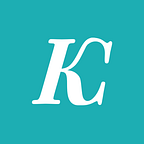Project iOS 9: Introduction
Hello! My name is Kevin Clayland and I am a Mobile UI/UX Designer. I will be starting a project here on Medium where I will be taking the current iOS 8 interface, break it down, and give it an update based on research and my knowledge in user experience and interface design. In each post I will talk about different features in iOS and a redesign based on principles in interaction and design patterns. This is a personal project I have been contemplating for a while that I would like to execute for myself. I post this here on Medium to engage readers about interface design and the philosophy of user experience. Below you may read a little history and principal design guidelines that lead into the reasoning for my project.
There are a lot of people that love iOS 8. The designs of iOS 7 and iOS 8 have been adopted by about 97% of iOS users with a majority or them on the latest release of iOS 8. Both are very similar in design compared to releases before. Apple is known for their excellent design and they make it a driving force for their company. Jony Ive has done a very good job at creating a flat and simple interface from scratch replacing the design of iOS 6 and below which was designed under Scott Forstall’s guidance before. Since the switch from skeuomorphism to Jony Ive’s vision of the mobile interface, people are finding the experience easier to use and uncluttered from distraction. Dieter Rams, a very well respected product designer, once said,
“Good design is as little design as possible.”
Jony Ive has been using this motto, which is part of the 10 rules for good design, that Dieter Rams stated. Dieter says as little design as possible is the most important however. You can see how Dieter has rubbed off on Jony in the few examples below.
Apple and its designers follow this design language directly from Dieter to create beautiful products. Dieter used to design for Braun and made very successful products that were also beautiful, something that Jony respected and admired. They were simply just easy to use and keen to the eye.
The design of Apple products have been following these design rules for a very long time but only recently have they applied them to the interface. Skeuomorphism has been the interface standard for iOS only up until September 2013 when the new iOS 7 flat and minimal design was released. Apple did a very nice job transforming from the interface looking like the real world objects to a flat interface. It took time to teach users the iOS interface and Apple used design that looked similar to the real world to have users understand it. After a lot of users understand the interface than a change can be made because the fundamentals are understood. The releases of iOS 7 and iOS 8 are the first ones to take the principles of Dieter and apply them to the screen. The minimal interface is less cluttered and has been accepted by many users of Apple products. Apple is taking on the concept of “As little design as possible” and using it for not only the products they make, but also the interfaces that are on them. They are standardizing the phone and interface to be simple, clean, without distractions, and elegant.
This is where I would like to come in. The flat minimal design is so new in the interface side of Apple that I would like to translate and redesign for iOS 9. There is always room for improvement in the UI as well as the UX and I would like to do just that before Apple releases it themselves.
